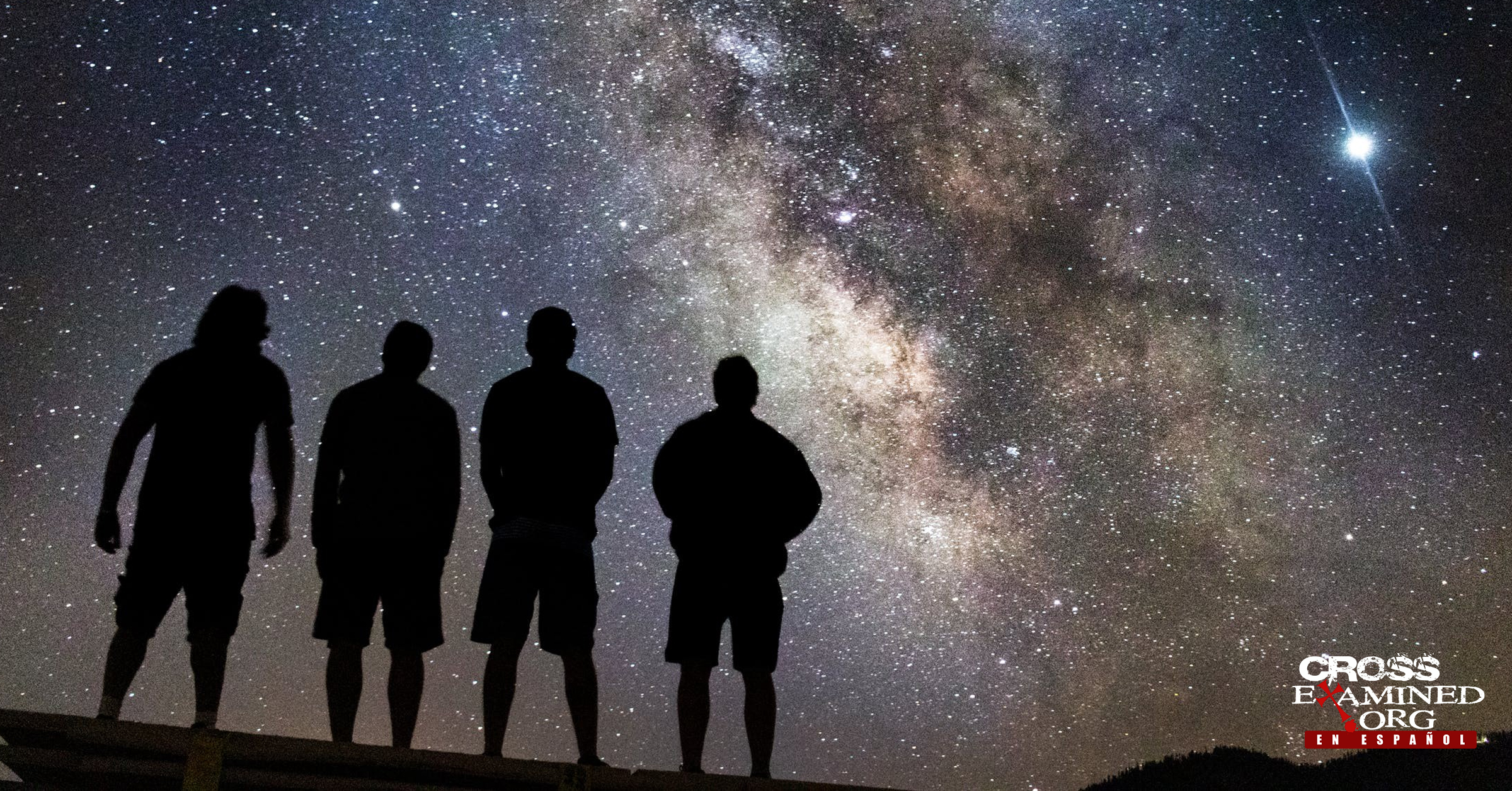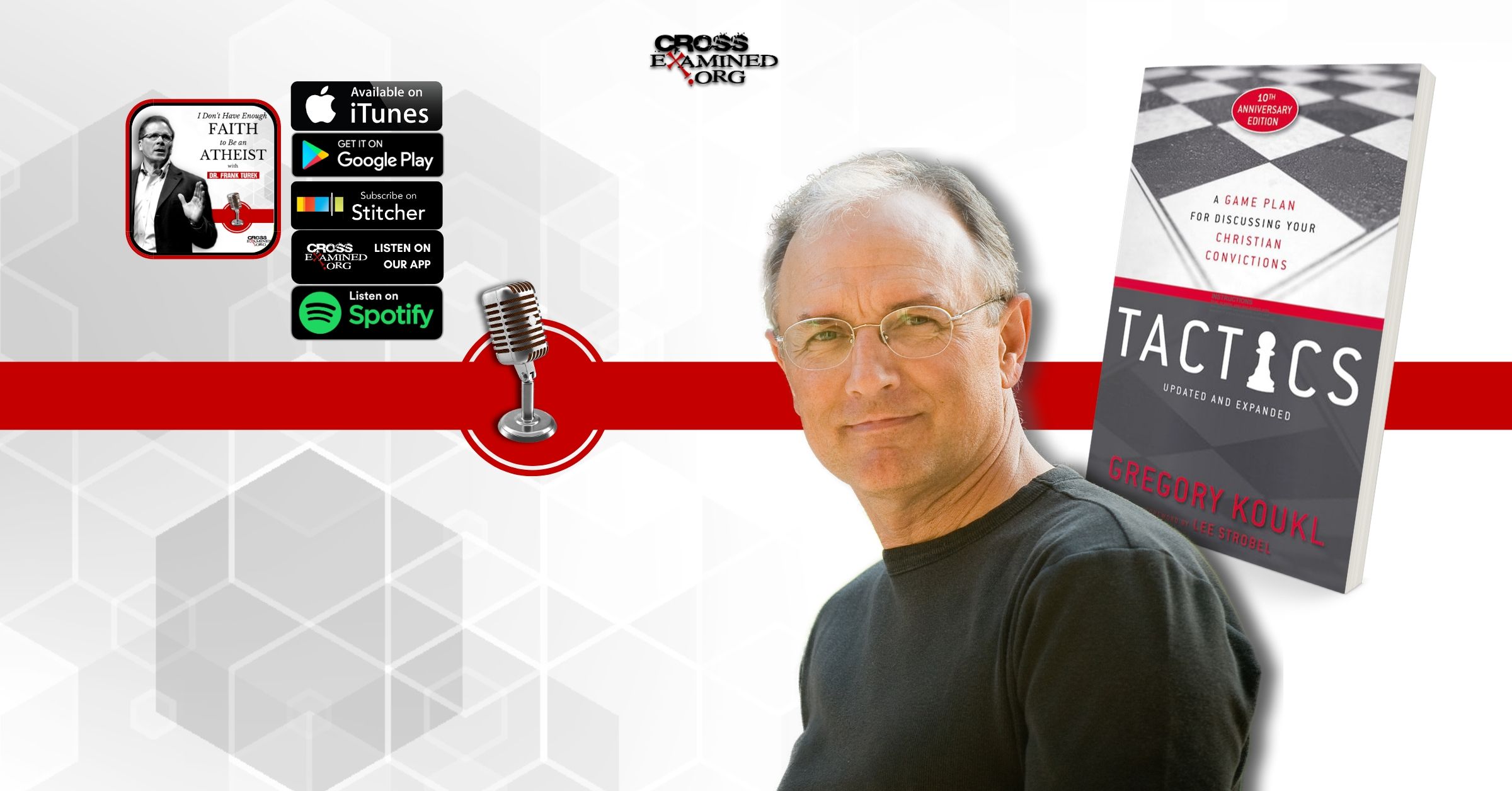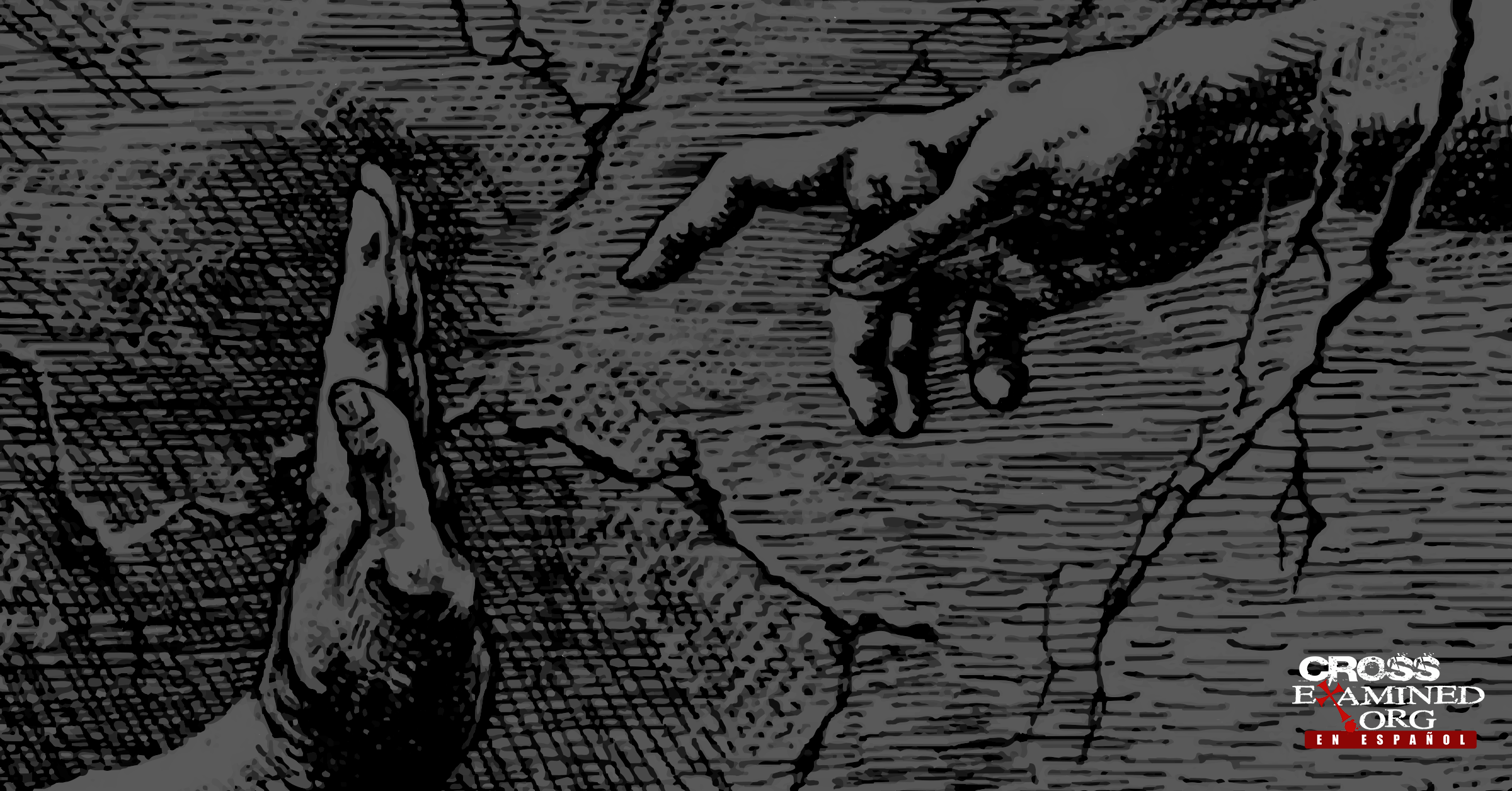By Jeremy Linn
The Apologetics world is filled with truth-infused books and lectures, many of which have made a lasting impact on people. But in a culture that’s dominated by entertainment platforms like YouTube, Netflix, and Disney+, not everyone is drawn to read a 300-page book, or to watch a one-hour lecture on an Apologetics topic.
What can often appeal to people is entertaining, creative content that does not compromise on presenting powerful truth. Just as there is a need for books and lectures, there is a need for Christians to use creative content as a platform to share the truth with others.
With this need in mind, I’ll list out 20 types of creative content Christians can use to share truth about the Christian worldview. For each type, I’ll provide a content idea and an existing resource, with the hope that they will help you develop new content ideas.
-
An Original Song
This is a nearly untouched area for Apologetics-type content. Music can provide a means to connect people with truth repeatedly in a way that can reach to people’s emotional core.
IDEA: Write a song about the order found in nature and how it points to an intelligent source.
RESOURCE: Christian rap artist Lecrae’s song Truth introduces concepts like the self-defeating nature of relative truth.
-
A Video or Book Filled with Humor
Humor lightens the tension people can experience in listening to and considering truth about deep topics. It also forms connections and builds relationships between a creator and the audience.
IDEA: Make a video called “A Consistent Jesus Mythicist,” which shows a “mythicist” who makes strange attempts to deny the existence of various historical figures.
RESOURCES: The Muhammad’s Boom Boom Room YouTube series by Acts17Apologetics supplies a bundle of humor wrapped up in truth about the content in the Muslim holy book, the Quran. On the book side, The Atheist Who Didn’t Exist by Andy Bannister comments on objections to Christianity in a humorous way.
-
An Entertaining Skit
Due to the entertainment value of a skit done well, a skit can draw people in to want to watch and consider content that they wouldn’t through a normal video presentation.
IDEA: Act out examples of what it would actually look like to live out “self-defeating statements.”
RESOURCE: The Apologetics YouTube channel Whaddo You Meme has released several entertaining skit videos.
-
A New Analogy
Analogies give Christians practical ideas for presenting the truth to others, and they help a truth-seeker to connect a concept with everyday experiences.
IDEA: For people in engineering, compare the relationship between science and theology with the relationship between mechanical and electrical engineering. In the two relationships, both areas reveal the truth about different aspects of reality but integrate in some spots.
RESOURCE: The book Faith is like Skydiving by Apologist Rick Mattson provides analogies for multiple areas in Apologetics.
-
A Magic Trick Routine
Magic creates an opportunity to talk about a topic while people watch eagerly in anticipation of what will happen next.
IDEA: Use a “disappearing coin” trick to discuss the need to see physical evidence vs. using “unseen” historical testimony as evidence.
RESOURCE: Magician Drew Worsham incorporates magic to introduce people to concepts related to the gospel.
-
A Letterboard Post
A comment or quote shown on a letterboard will stick out to people on platforms like Instagram right away, causing then to read and consider whatever is written. They’re especially great for location-based organizations.
IDEA: Take a picture of a letterboard with a C.S. Lewis quotation at the C.S. Lewis museum in Illinois.
RESOURCE: The ministry Twin Cities Apologetics has shared letterboard posts on their Instagram page, with the pictures taken in their local area.
-
A Satire Piece
Satire provides a perfect platform to combine truth, humor, and current events that are relevant to the reader.
IDEA: Write a satire piece called “10-year Challenge Reveals Richard Dawkins’ Chair Still Empty for His Debate With William Lane Craig.”
RESOURCE: The Babylon Bee has released some great satire pieces related to deep topics.
-
A Relevant Meme
Memes provide an opportunity to work creativity and humor into sharing truth and often require little effort to produce and share. Adding a recent pop-culture reference can especially attract people to view and share the content.
IDEA: At the top of a meme, write “When someone says there’s no good evidence for the existence of Jesus.” On the bottom show the SpongeBob picture that says “Ight imma head out,” and paste on pictures of some of Paul’s letters, the gospels, and the works of historians like Josephus.
RESOURCE: The ministry Standardized Apologetics has done excellent work with creating high-quality, relevant, and impactful memes.
-
An Interview Featuring Unique Questions
Interviews of well-known Apologists are abundant, which creates potential for questions to be repeated often. Discussion that features unique questions rather than the “same old” questions can help viewers think of a concept in a different way.
IDEA: Interview a Christian Apologist about the most difficult conversations they’ve had with an Atheist, and then a Christian, and ask what they learned from both experiences.
RESOURCE: The ministry Capturing Christianity featured an interview with Apologist William Lane Craig, where a unique question was asked about the arguments Craig is most and least confident in. The question provoked an intriguing response.
-
An Interactive Game
A game creates an interactive environment where people want to actively think about the game and its contents.
IDEA: Write individual words/phrases on pieces of paper and hold a competition where participants pull together the sheets of paper to make the best (or funniest) philosophical argument they can.
RESOURCE: Perspective cards made by the organization Cru get people talking about worldviews in a fun and interactive way.
-
A Fictional Story
A fictional story entertains and mentally transports the reader into a “new world,” all while applying real-world truth to the story.
IDEA: Write a story about “The Restart,” a made-up moment in history where everyone suddenly lost the memory of the past, and need to “start over” to determine what is true about the world.
RESOURCE: C.S. Lewis’ The Chronicles of Narnia is probably the most obvious example of a book that transports people to another world while applying Biblical truth throughout the story.
-
An Artistic Poem
Poetry appeals to a more abstract and artistic crowd – a crowd that may not be as attracted to a straight lecture. It opens people up to think about ideas in a different, relatable way.
IDEA: Write a descriptive poem about what you observe in nature and how it reveals the glory of a creator.
RESOURCE: T.S. Eliot’s “The Journey of the Magi” takes the Biblical account of the wise men and turns it into an imaginative poem which invites people to think about “death” and “birth” from a Christian standpoint.
-
An Instagram Story Series
Instagram stories are a new wave of video content that many people are viewing daily. Instagram stories can drive traffic on that platform and can be repurposed for other platforms.
IDEA: Share 15-second clips of your experiences and some content from an Apologetics conference you attend.
RESOURCE: Jorge Gil from CrossExamined does an Instagram Livestream each weekday, where he talks about a deep topic and answers audience questions. He also shares Instagram stories on a regular basis.
-
A Helpful Diagram
A diagram adds a visual element that allows people to better grasp the truth you are presenting.
IDEA: Lay out some of the arguments for God in a Venn diagram and show how some of the arguments overlap in what they tell us about God.
RESOURCE: It’s not exactly a diagram, but a video by Reasonable Faith provides a visual of the Kalam Cosmological Argument that helps people to see how the premises of the argument flow to the conclusion.
-
Posts That Explore Unique Topics
Some topics that are addressed often in the Apologetics community (for example, the Moral Argument). Sharing content based on a topic not commonly addressed leads people to think about reality in a new way.
IDEA: Respond to the Atheist claim that Christians are “indoctrinated” by defining and analyzing the concept of indoctrination.
RESOURCE: The YouTube channel InspiringPhilosophy has released some impressive videos that cover topics not often addressed, especially related to the formation of the Universe.
-
A Visual Presentation
As our culture consumes more video content, people in our culture are learning in a more visual way. Adding visuals to a public speaking opportunity can help people connect with the content presented.
IDEA: Present on the fine-tuning argument and provide visual representations of the precision for various constants needed to make life possible.
RESOURCE: J Warner Wallace creates engaging visual presentations as he guides his audience into an investigation around topics like Jesus’ resurrection.
-
A Talent-Based Performance
When people see a talent performed in a way that displays excellence, they are generally willing to listen to truth and consider what is being said.
IDEA: If you are skilled at juggling, put together a juggling routine and talk about how God is needed to have order in the universe and to ground scientific laws like gravity.
RESOURCE: This is more of an example than a specific resource, but various Christian ministries use a mime performance to share truth related to the gospel.
-
A Location-Based Video
Videos based on Apologetics topics are often filmed at a church or in someone’s room. A video filmed in a public place can create a more personal connection with people, especially those who live in the area the video is filmed in.
IDEA: Go to your nearest downtown location and film yourself talking about a topic relevant to the area you live in.
RESOURCE: Apologist David Wood filmed a continuous video through a city subway testimony, all while sharing his testimony and a load of truth throughout the video.
-
A High-Quality Quote Post
Similar to the letterboard post, if you design a graphic featuring a quote where the words can be clearly read, and the background looks professional, it can draw people in to read the quote and consider the truth presented.
IDEA: Share a quote from Frank Turek about how Atheists need to borrow a foundation for morality from Christianity in order to discuss moral truth, featuring a graphic with a high-quality greyscale image of Frank.
RESOURCES: CrossExamined consistently shares high-quality quote posts. New York Apologetics also does a great job with sharing these types of posts.
-
A Song Parody Video
Through a parody, you can take something that people can already relate to (like a popular song) and create something humorous that can get people thinking about truth presented in the lyrics.
IDEA: Take the music to Taylor Swift’s song “You Need To Calm Down,” change the title to “Is The Kalam Sound?” and write lyrics that defend the premises of the Kalam Cosmological Argument.
RESOURCE: There aren’t many parodies that feature Apologetics topics, but a band actually called Apolgetix creates song parody videos about topics related to scripture and the gospel.
These are not the only types of creative content that could be shared. But this list provides a look into the areas in which Christians can present truth in an attractive and entertaining way.
Do you want to begin sharing truth with others through creative content? Pick one of the things above, take a concept you have learned, and combine the two together to make something new. God can use your creative efforts to lead people in your local area – and even around the world – one step closer to truth.
Recommended resources related to the topic:
Tactics: A Game Plan for Discussing Your Christian Convictions by Greg Koukl (Book)
Practical Apologetics in Worldview Training by Hank Hanegraaff (Mp3)
The Great Apologetics Adventure by Lee Strobel (Mp3)
Defending the Faith on Campus by Frank Turek (DVD Set, mp4 Download set and Complete Package)
So the Next Generation will Know by J. Warner Wallace (Book and Participant’s Guide)
Reaching Atheists for Christ by Greg Koukl (Mp3)
Living Loud: Defending Your Faith by Norman Geisler (Book)
Fearless Faith by Mike Adams, Frank Turek and J. Warner Wallace (Complete DVD Series)
Jeremy is the co-founder of the ministry Twin Cities Apologetics and is an accountant for a law firm in Minneapolis, Minnesota. He’s also going to Bethel Seminary for a graduate degree in a program called Christian Thought (basically Apologetics!). Outside of Apologetics, Jeremy enjoys sports, playing guitar, and making videos.











